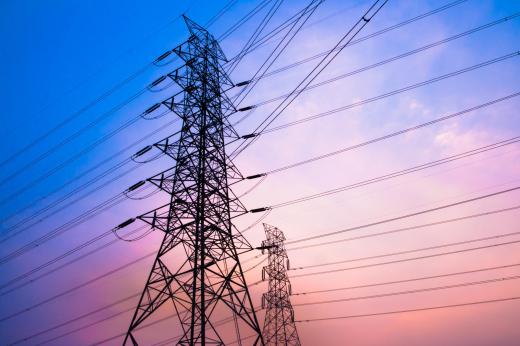What is a Power Rating?
A power rating is a measurement of the maximum amount of power that can be used with a specific tool or device. It is provided in order to keep the user safe and to prevent the tool or device from becoming damaged. Typically, the rating provided by the manufacturer is slightly less than the actual maximum level in order to provide additional safety.
Typically, the power rating for a device is expressed in watts when representing the actual power. The perceived power, however, is expressed as volt-amperes. In the case of large power systems, watts and volt-amperes may be expressed as a per-unit system rating.

For devices that change electricity into mechanical power or dissipate the power, the power rating is a measurement of how much they can safely dissipate. Examples of these devices include motors, resistors, and speakers. The power rating on these devices is usually determined by the amount of heat created from electrical power, as the heat that is created will damage the device if it reaches a certain level. This is particularly true for speakers.
Many factors go into determining the power rating based on heat production. These include the maximum temperature at which the device can safely operate and the range of temperatures in which the device will operate under normal conditions. The method for cooling the device is also taken into consideration. For this reason, a device may have a different rating for various types of cooling systems, such as water cooling and air cooling.
Devices that convert electricity into various forms, such as transformers, or that move it from one place to another, such as transmission lines, also require a power rating. In these cases, the rating is a measurement of the maximum power that can safely move through the device. As with devices that dissipate power, those that allow the flow of electricity will be damaged if the too much power is used.
Heat is also a key factor in determining the power rating for devices such as transformers. The formula used by engineers to determine the power rating for these types of devices, however, is different than the one used for those that dissipate electricity. This is because the power that is converted by the device is not directly related to the amount of heat dissipated.
AS FEATURED ON:
AS FEATURED ON:











Discussion Comments
It's the amount of current needed to power any device, e.g., a printer
@Georgesplane- I take a more pragmatic approach to the efficiency of renewable energy technologies. Although the efficiencies are low compared to conventional power generation technologies, renewable energy like solar, wind, and hydro have no adjustable costs. The only need for these methods is to be efficient enough to make a return on the investment. Besides, these inefficiencies leave room for improvement, meaning it is only a sign that the industry has room to mature. Energy usage will only grow, but the renewable energy industry has room to grow with demand.
@Pelestears- When someone refers to the installed capacity of a wind or solar project, it is in reference to the maximum power output of the farm at any given instance. The amount of power produced will be measured in GWh, MWh or kWh. The sun will not shine constantly, nor will the wind blow constantly.
In the case of wind farms, the farms often produce 20 to 30 percent of the rated capacity when averaged over a a year. It would be practically impossible for a wind farm to produce over 50 percent of the rated capacity, and in these cases, it is usually confined to offshore wind. The rated capacity takes into account the efficiency limits of wind turbines to come up with a figure that will express the maximum power that turbine can output.
I have a question. What is meant when for example, a newspaper reports on a 100 MW wind farm being developed? Is the 100 MW reflective of the electrical power rating of the facility or is it the amount of electricity that the facility constantly produces?
Post your comments